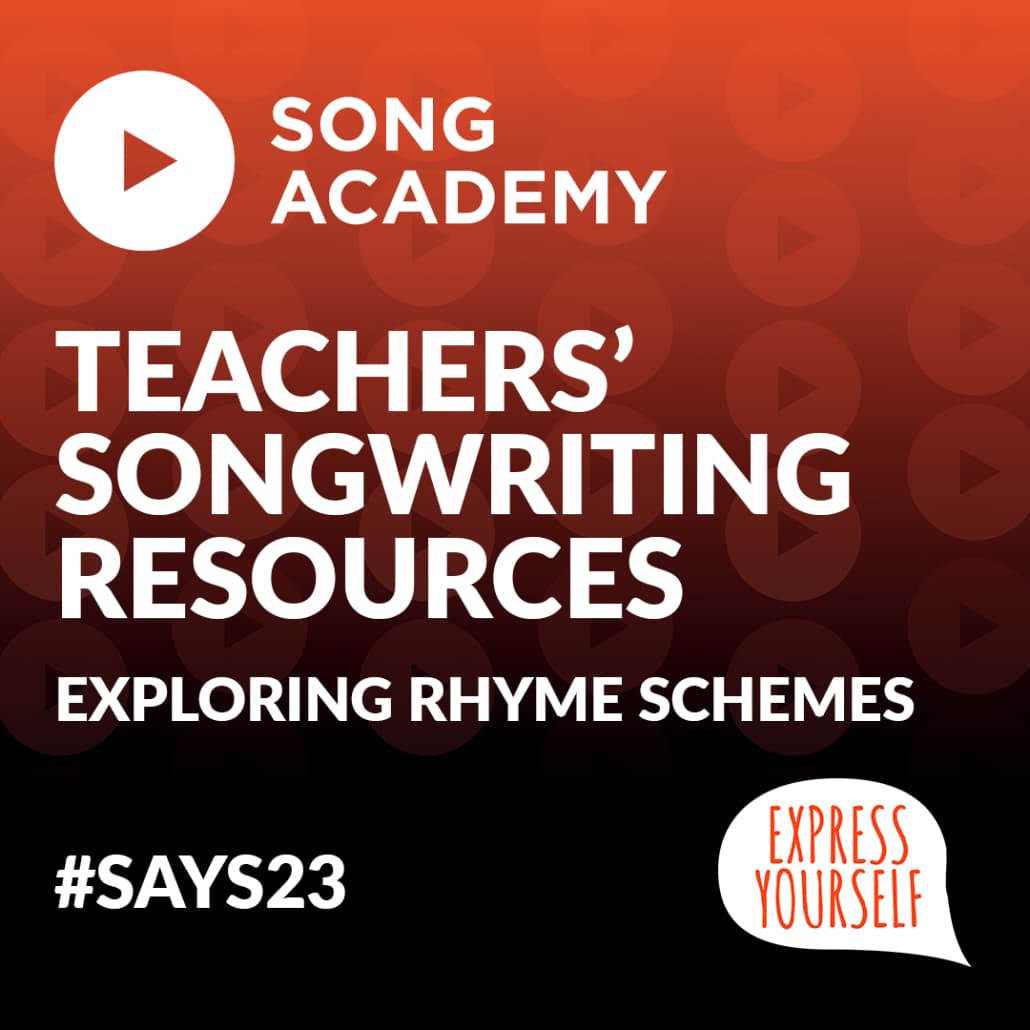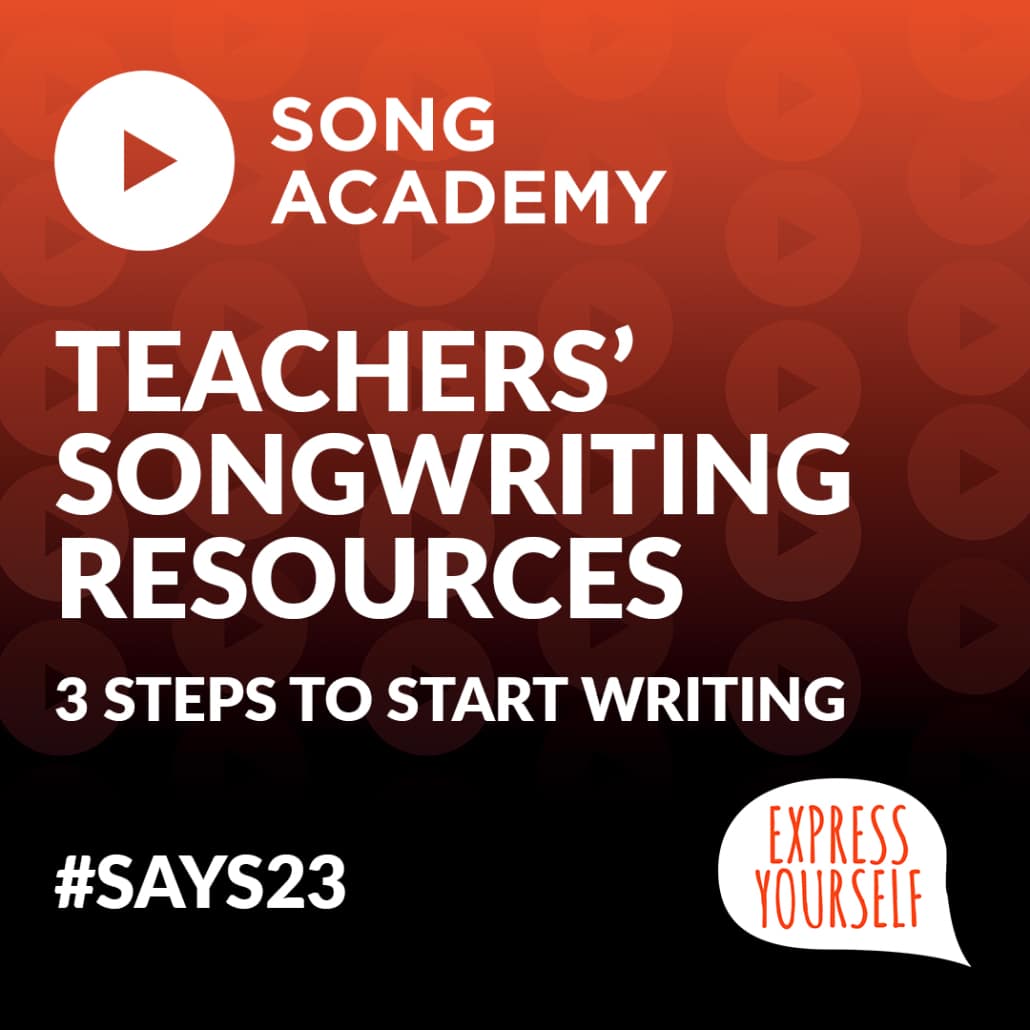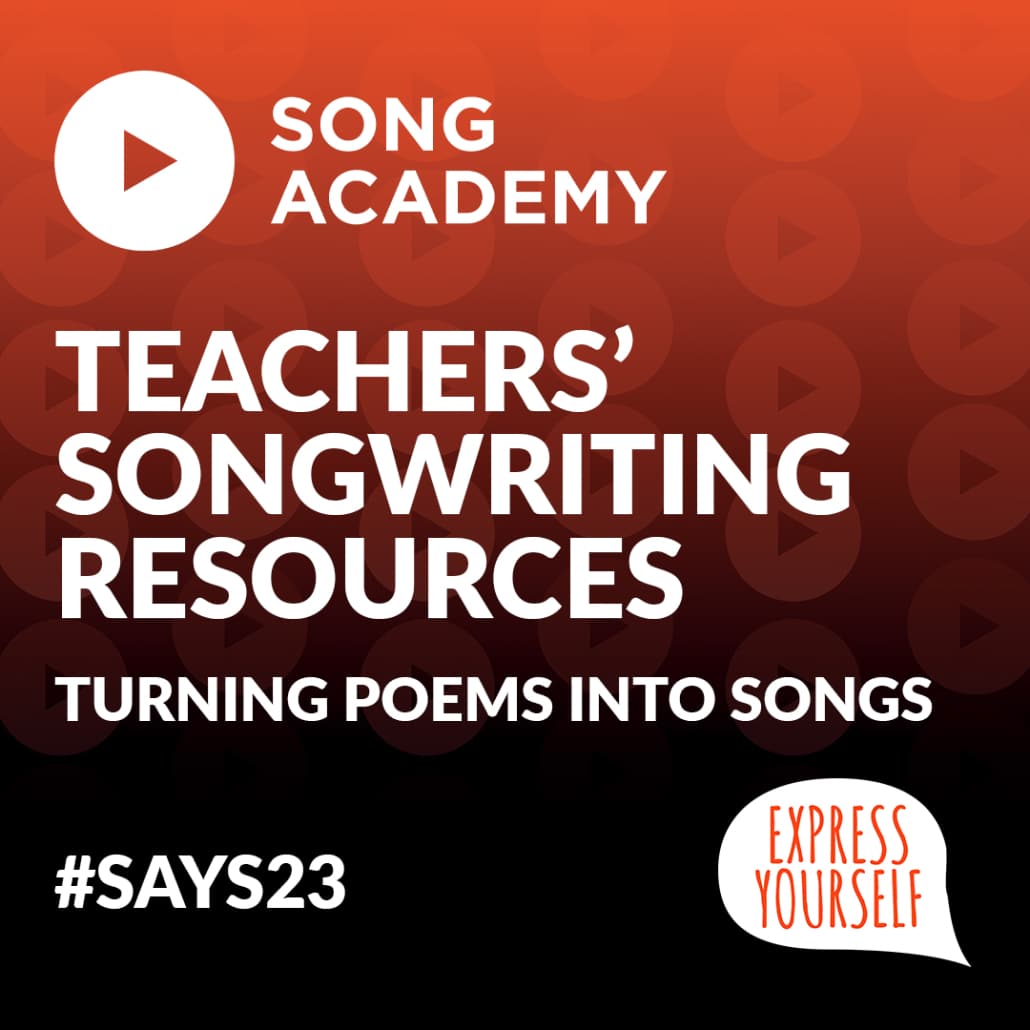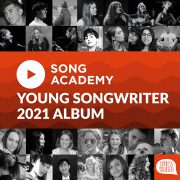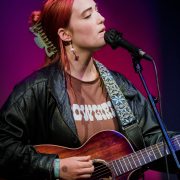We’ve created a playlist full of inspiring songs across different genres for broadening young people’s knowledge of popular music. Have a listen and more information on each song is shown below.
Click here for the Spotify playlist
Click here for the YouTube playlist
POP
I Will Always Love You – Whitney Houston (1974)
“I Will Always Love You” was originally written and recorded by Dolly Parton, who achieved commercial success with it, reaching the top spot of the Billboard Hot Country Songs chart not once, but twice. She also wrote arguably her best known song, “Jolene”, on the same day. It is a traditional love song and the lyrics reflect that!
Whitney Houston’s version was recorded for the film “The Bodyguard” in 1992. It is considered to be a pop song with elements of soul and R&B music. The tempo is 134bpm and it is in the key of A major.
Love Story – Taylor Swift (2008)
“Love Story” was written and recorded by Taylor Swift, and she co-produced it with Nathan Chapman. It was the lead single from her second album. The song was inspired by the storyline of Romeo & Juliet but also a situation that Swift was in herself with a love interest and her family. She took inspiration from the plot of Romeo & Juliet but changed it to a happy ending, instead of the tragedy ending of the original.
It is one of the best-selling pop singles in the United States. The tempo is 120bpm and it is in the key of D major.
Thriller – Michael Jackson (1984)
“Thriller” is one of the best-selling singles of all time, and was written by English songwriter Rod Temperton. It has a very theatrical theme, as Jackson was a huge fan of film. It was originally titled “Starlight” but after some discussion with the production team (including Quincy Jones) the title eventually ended up being “Thriller”.
The closest genre is disco/funk. The tempo is 120bpm and it is in the key of C# minor.
Crazy in Love – Beyonce ft Jay-Z (2003)
“Crazy in Love” was written by Rich Harrison, Beyoncé Knowles, Shawn Carter (Jay-Z) and Eugene Record (included as a writer of the original song the song samples, “Are You My Woman? (Tell Me So)” by The Chi-Lites.
It is a pop song with elements of hip hop, funk and R&B. The tempo is a moderate 110bpm and it is in the key of F major and D minor (the relative minor of F major).
We Found Love – Calvin Harris ft Rihanna (2011)
“We Found Love” is a song recorded by Calvin Harris and Rihanna, but was written and produced solely by Calvin Harris. The song mainly revolves around the main hook “we found love in a hopeless place”, and Rihanna’s vocal is fairly relaxed, contrasting with the high energy beat.
It is considered to be in the electro house/pop genre. The tempo is 128bpm and it is in the key of F# major.
Shallow – Lady Gaga & Bradley Cooper (2018)
“Shallow” was written as the lead single from the soundtrack to “A Star is Born”, which stars both Lady Gaga and Bradley Cooper. It was written by Lady Gaga, Andrew Wyatt (Miike Snow), Anthony Rossomando (Dirty Pretty Things) and Mark Ronson. It is a love song written about the relationship between the two leads in the film.
It is considered to be a pop/rock power ballad. The tempo is a moderate 96bpm and it is in the key of G major.
Leave Right Now – Will Young (2003)
“Leave Right Now” was written by Eg White (who has been on the judging panel for several Song Academy Young Songwriter competitions!) and performed by Will Young. It is reportedly written about unrequited love and was one of Will Young’s most successful songs.
It is considered a pop song. The tempo is 84bpm and it is in the key of F# major.
Bad guy – Billie Eilish (2019)
“Bad guy” was written by Billie Eilish and her brother Finneas O’Connell. The theme of the song is Eilish talking to her partner and taunting him for being a ‘bad guy’. The lyrics are tongue in cheek and the vocal is almost spoken.
It is considered to be an electro pop song. The tempo of the first half is moderately fast at 132-138bpm and the second half slows down to 60bpm.
Losing You – Solange (2012)
“Losing You” is a song recorded by Solange Knowles (Beyoncé’s sister!) and written by Solange and Dev Hynes. The song is described by Knowles herself as “eclectic with ‘80s references and African percussion influences”. It received almost universally positive reviews from music critics and is Solange’s most popular tune to date.
It is considered to be a dance pop song. It is at a tempo of 114bpm and is in the key of C major.
Shape of You – Ed Sheeran (2017)
“Shape of You” is a song written by Ed Sheeran, Steve Mac and Johnny McDaid, but the original songwriters of “No Scrubs” by TLC are also credited due to certain similarities in the songs. It was the best selling song of both 2017 and the decade in the UK, and peaked at number one in 34 countries.
The song is considered to be pop with influences from dancehall and tropical house. It is at a moderate tempo of 96bpm and is in the key of C# minor.
Someone Like You – Adele (2011)
“Someone Like You” was written by Adele and Dan Wilson for Adele’s second studio album “21”. It is a song about heartbreak and the end of a relationship, and Adele’s coming to terms with it. The song contains only a piano and a vocal, and was critically acclaimed, especially after a performance at the Brit Awards that pushed the song to the number one spot in the UK.
It is considered a soul/pop ballad. It has a slow tempo of 68bpm and is in the key of A major.
Get Lucky – Daft Punk ft Pharrell Williams (2013)
“Get Lucky” is a song written by Daft Punk, Nile Rodgers and Pharrell Williams. It won “Record of the Year” and “Best Pop Duo/Group Performance” at the 56th Annual Grammy Awards and is one of the best selling singles of all time.
It is considered a disco/pop song, and it has a tempo of 116bpm, composed in the key of F# minor.
Round Round – Sugababes (2002)
“Round Round” is a song written by Sugababes (Keisha Buchanan, Mutya Buena, and Heidi Range), as well as one of our very own Young Songwriter competition judges Miranda Cooper, alongside Niara Scarlett, Brian Higgins, Tim Powell, Nick Coler, Shawn Lee, and Lisa Cowling. It also includes a sample from “Tango Forte” by Dublex Inc. who are also credited as writers.
It is regarded as one of the songs that changed the direction of British pop music, with “Sound of the Underground” by Girls Aloud (another Miranda Cooper co-write) sharing that accolade. It originally started with a drum track that Brian Higgins had that Miranda Cooper sung a chorus from one of her unreleased songs over.
It is considered to be a dance/pop song at a tempo of 127bpm, and written in the key of F# minor.
Hands Up – Merk & Kremont ft DNCE (2018)
“Hands Up” is a song written by Young Songwriter competition judge Emily Phillips alongside Merk & Kremont, Simon Says!, Eugenio Maimone, Joe Jonas, BullySongs, Josh Record & Ant Whiting.
It features DNCE, with their singer Joe Jonas singing the song. It is an energetic and upbeat pop song with disco and rock elements and has been certified platinum.
It is considered a pop/rock song and has a tempo of 108bpm, written in the key of E minor.
Heal – Tom Odell (2013)
“Heal” was written by Tom Odell, one of the judges of the Young Songwriter competition. It is about wanting to heal from past experiences and needing someone (or something) else to take it away for you. It’s a heartfelt piano ballad.
It is considered to be a pop song at 110bpm, written in the key of Bb minor.
Happiness – McFly (2020)
“Happiness” is a song written by McFly (Danny Jones, Dougie Poynter, Harry Judd and Tom Fletcher) with Jason Perry, Jordan Cardy (aka Rat Boy) and Oberdan Oliveira.
It is an upbeat, happy sounding and soulful pop tune with a big chorus. The intro and chorus are built upon a bright sounding brass sample that reoccurs throughout the song, reinforcing the major, happy sound to the song.
It is considered a pop song. It has a tempo of 106bpm and is in the key of F major.
ROCK
Somebody That I Used to Know – Gotye ft Kimbra (2011)
“Somebody That I Used to Know” was written by Wally de Backer (Gotye) and also credits Luiz Bonfá for the use of a sample from his 1967 song “Seville”. It also interpolates the first few notes from the nursery rhyme “Baa Baa Black Sheep”. Lyrically it is about becoming distant with a romantic partner that you used to be close with.
It is Gotye’s most successful song and has been certified multiplatinum in ten countries, having sold more than 13 million copies worldwide.
It is considered to be an art pop song. It has a tempo of 129bpm and is in the key of C major.
Tempted – Squeeze (1981)
“Tempted” is a song by the band Squeeze, written by Song Academy judge Chris Difford alongside Glenn Tilbrook. It has been synced in films, adverts, TV series and video games, including adverts for Heineken and Burger King as well as in the video game Rock Band.
Chris Difford wrote the lyrics to the song in a taxi on his way to the airport when he started to write down what he saw. It has been covered by many great artists and still receives airplay today.
It is considered a pop rock song, played at a tempo of 95bpm and in the key of F# minor.
Mr Brightside – The Killers (2003)
“Mr Brightside” is a song written by Brandon Flowers, Dave Keuning, Mark Stoermer and Ronnie Vannucci Jr. It was released in 2003 and was fairly successful, but its 2004 rerelease was when it really became popular.
Lyrically the song is about a paranoid man suspecting his partner of being unfaithful, and only has one verse that is repeated. In July 2019, the song had spent a combined total of 209 weeks in the top 100 chart, and it is a staple of many DJ and cover band sets across the world.
It is considered to be an alternative rock song. It has a tempo of 148bpm and is in the key of Db major.
Bohemian Rhapsody – Queen (1975)
“Bohemian Rhapsody” is a song written by Freddie Mercury, it is considered by many to be the greatest rock song of all time and has been downloaded or streamed over 1.6 billion times.
It is unusual for a hit single as it doesn’t feature a chorus, and moves between contrasting sections that dip into several genres including progressive rock, opera inspired sections, hard rock and progressive pop.
It is considered to be a rock song. The tempo and key changes and modulates throughout.
Paranoid Android – Radiohead (1997)
“Paranoid Android” is a song written by the band Radiohead. The lyrics were written by the band’s singer Thom Yorke after a night he had spent in a Los Angeles bar.
It is comprised of four distinct sections that were edited together using tape, and the original version was over fourteen minutes long. It was eventually edited down to around six and a half minutes long after cutting out an organ solo.
It is often mentioned in lists of the best rock songs ever. It is considered to be an alternative rock song, both the tempo and the key changes throughout.
Counting Stars – One Republic (2013)
“Counting Stars” was written by Ryan Tedder whilst waiting for a studio session with Beyoncé. He said it was inspired by a song that had an “indigenous folk sound” that “struck him like lightning”. Lyrically the song is about the stresses of life and how to deal with them whilst laying awake at night.
It is considered to be a folk/pop song with the tempo starting at 104bpm before riding to 122bpm. It is written in the key of C# minor.
Friday I’m In Love – The Cure (1992)
“Friday I’m In Love” was written by Perry Bamonte, Boris Williams, Simon Gallup, Robert Smith and Porl Thompson.
It is upbeat and happy sounding despite starting as a slower song. After writing it, Robert Smith convinced himself that he had inadvertently stolen the chord progression and melody, so he called around and played the song to as many people he could, none of whom confirmed his suspicions, reassuring him that it was his own melody.
It is considered an indie/alternative rock song and has a tempo of 136bpm. It was recorded in D major, but the studio version sounds slightly higher after Robert Smith forgot to turn off the vari-speed on the tape.
The Chain – Fleetwood Mac (1977)
“The Chain” was written by Lindsey Buckingham, Mick Fleetwood, Christine McVie, John McVie and Stevie Nicks, and is the only song on the Rumours album that credits every band member as a writer.
The song is made up of “previously rejected materials” and was spliced together from various other songs using tape during the recording process, which one of the reasons all of the members are credited as writers. Despite the method in which it was created, it still has a basic rock structure with distinct sections.
It is considered to be a folk/country/hard rock song. It has a tempo of 150bpm and is played in the key of E minor.
When Doves Cry – Prince (1984)
“When Doves Cry” was one of two songs written by Prince after being asked by the director of the “Purple Rain” film, Albert Magnoli, to write a song that would fit with a particular scene that dealt with parental difficulties and a love affair.
It was Prince’s first Billboard Hot 100 number one hit. The arrangement of the song is unique in that it does not feature a bass line.
It is considered to be an experimental pop/rock song. It has a tempo of 120bpm and is in the key of A minor.
Stuck in the Middle with You – Stealers Wheel (1973)
“Stuck in the Middle with You” was written by Gerry Rafferty and Joe Egan, performed by their band Stealers Wheel.
It is written about a music industry cocktail party and is a parody of Bob Dylan’s musical style, it is often wrongly attributed to Dylan. The song was used in the 1992 Quentin Tarantino film “Reservoir Dogs”, which introduced the song to a whole new audience.
It is considered to be a country/folk rock song. It has a tempo of 124bpm and is in the key of G major.
Comfortably Numb – Pink Floyd (1979)
“Comfortably Numb” is a song written by David Gilmour and Roger Waters for their band, Pink Floyd. It is one of their best known songs, in particular for its two guitar solos.
The lyrics are part of the concept of the album, The Wall, and are about an embittered and alienated rockstar who is being medicated in order to perform at a show, inspired by Waters’ experience during a Pink Floyd show in 1977.
It is considered to be a progressive rock song. It has a tempo of 127bpm. The verses are in the key of B minor, whilst the chorus has been described as using a modal interchange of that key’s relative major, D major, and Mixolydian of D.
Wonderwall – Oasis (1995)
“Wonderwall” is a song written by Noel Gallagher for his band Oasis. It is arguably the band’s most popular song and according to Noel “it’s a song about an imaginary friend who’s gonna come and save you from yourself”.
It was recorded at the iconic Rockfield Studios in Wales, Liam Gallagher sings the lead vocal.
It is considered an alternative/pop rock song. It has a tempo of 87bpm and is in the key of F# minor.
If We Were Vampires – Jason Isbell and the 400 Unit
“If We Were Vampires” is a song written by Jason Isbell.
He wrote it after his wife convinced him to stop watching TV and write a song, as he was due to go into the studio soon. He said he knew the song would be very moving for people when he realised how moving it was for himself the first few times he tried to play it to people.
It is considered an alternative country/Americana song. It has a tempo of 97bpm and is in the key of F Major.
When the Sun Goes Down – Arctic Monkeys (2006)
“When the Sun Goes Down” is a song written by Alex Turner for his band Arctic Monkeys. It starts off with a simple guitar and vocal arrangement and suddenly develops into a harder rock full band sound, before reverting back to the guitar and vocal arrangement of the intro for the song’s outro.
The lyrics address difficulties of the people living in a deprived area of Sheffield, and reference the song “Roxanne” by The Police.
It is considered to be an indie rock song. It has a tempo of 168bpm and is in the key of B minor.
Johnny Got a Boom Boom – Imelda May (2009)
“Johnny Got a Boom Boom” is a song written by Young Songwriter competition judge Imelda May. It was the lead single from her second studio album “Love Tattoo”.
It launched Imelda May into mainstream success after a “Later… with Jools Holland” performance. Imelda May explained in an interview that the song was born out of boredom, and that she was in another band but wanted to write her own material.
The song is considered to be a rockabilly song. It has a tempo of 110bpm and is in the key of A minor.
Loner – Yungblud (2019)
“Loner” is a song written by Dominic Harrison (aka Yungblud) Karl Michael, Matt Schwartz and Robbie McDade. It has a very anthemic, alternative feel, and showcases Yungblud’s grungey yet pop sensibilities, with huge hooks and a confident, snarling vocal performance.
It has a traditional band sound with modern production, it utilises distortion and big drum sounds to bring energy and fullness to the song.
It is considered to be an alternative/indie song. It has a tempo of 99bpm and is in the key of Db major
HIP HOP/RAP
Gangsta’s Paradise – Coolio ft L.V. (1995)
“Gangsta’s Paradise” is a song written by Artis Ivey, Jr., Larry Sanders and Doug Rasheed, but Stevie Wonder is also credited for the use of a sample from his song “Pastime Paradise” from “Songs in the Key of Life”.
The song has various religious overtones including Bible passages and choral vocals. The first few lines of the lyrics were freestyled by Coolio, and he said the rest came very quickly in one sitting. He also claims that divine intervention played a part and he was a vessel for the song.
It is considered to be a hip hop/gangsta rap song. It has a tempo of 80bpm and is in the key of Ab major.
Own It – Stormzy ft Ed Sheeran & Burna Boy (2019)
“Own It” is a song written by Michael Omari (aka Stormzy), Ed Sheeran, Fred Gibson and Damini Ogulu. It is the second collaboration between Stormzy and Ed Sheeran after their song “Take Me Back to London”.
The lyrical themes revolve around “empowering and uplifting a female love interest” using wordplay and the production has a dancehall feel.
It is considered to be a hip hop/rap song. It has a tempo of 104bpm and is in the key of G major.
Man Don’t Care – JME ft Giggs (2015)
“Man Don’t Care” is a song written by JME and Giggs, it utilises impressive wordplay and rhythm to deliver the vocal over a simple beat that loops throughout.
The lyrical theme revolves around being successful and being the best at what you do, effectively taunting any opposition.
It is considered to be a grime song. It has a tempo of 140bpm and is in the key of E major.
One Dance – Drake ft Wizkid & Kyla (2016)
“One Dance” is a song written by Aubrey Graham (aka Drake), Paul Jefferies, Ayodeji Balogun, Noah Shebib, Errol Reid, Luke Reid, Kyla Smith, Corey Johnson and Logan Sama. This includes writers on the original song “Do You Mind (Crazy Cousinz Remix)” that was sampled by producer Nineteen85 for the bridge of “One Dance”.
It is Drake’s first dancehall single as a lead artist, following his feature on the single “Work” with Rihanna. The lyrical theme is about love and relationships in the context of being in a club or dancing with a love interest, with the vocalists each singing from a different perspective.
It is considered to be a dancehall song. It has a tempo of 104bpm and is in the key of Bb minor.
Down with the Trumpets – Rizzle Kicks (2011)
“Down with the Trumpets” is a song written by Jordan Stephens, Harley Alexander-Sule (a Song Academy judge!), Dag Nabbit, Darren Lewis, Iyiola Babalola and Will Davies.
The song utilises a bed of samples and beats supporting a strong rapped lyric for the verses and a simple repeated hook for the chorus.
It is considered to be a hip hop/rap song. It has a tempo of 115bpm and is in the key of E minor.
Milkshake – Kelis (2003)
“Milkshake” is a song written by Chad Hugo and Pharrell Williams, otherwise known as The Neptunes. It is Kelis’ highest charting single to date and the lyrics utilise euphemism and playground style wordplay along with a simple, catchy melody to bring the whole song together.
It is considered to be an R&B/dance song. It has a tempo of 113bpm and is in the key of C# minor.
Take What You Want – Post Malone ft Ozzy Osbourne & Travis Scott (2019)
“Take What You Want” is a song written by Austin Post (aka Post Malone), John Osbourne (aka Ozzy Osbourne), Jacques Webster (aka Travis Scott), Louis Bell, Andrew Watt and Billy Walsh.
It is a fusion of modern trap style music and guitar based rock, reminiscent of the sounds of Black Sabbath, Ozzy Osbourne’s band. The lyrics explore a relationship where one person has let the other person down, and describes the resulting feeling of defeat and sadness.
It is considered to be a trap/rock/hip hop/rap song. It has a tempo of 140bpm and is in the key of C# minor.
It’s Like That – Mariah Carey ft Jermaine Dupri & Fatman Scoop (2005)
“It’s Like That” is a song written by Mariah Carey, Jermaine Dupri, Manuel Seal and Johntá Austin, with additional credits going to Joseph Simmons, Darryl McDaniels and Jason Mizell for the use of a Run-DMC sample.
Lyrically, the song is about wanting to relax and have a good time, without giving into stress or hard times. It combines ad libs and rap sections with Carey’s sung vocals.
It is considered to be a hip hop song. It has a tempo of 86bpm and is in the key of Ab minor.
Jump Around – House of Pain (1992)
“Jump Around” is a song written by Lawrence Muggerud and Erik Schrody. The beat was originally produced for Cypress Hill, but rapper B-Real didn’t want to record it at that time, Ice Cube was also offered the beat but turned it down, before it was finally taken by House of Pain.
One of the most recognisable parts of the song is the “squealing” noise that occurs in almost every bar. The exact origin of the sample has not been confirmed but there are rumours as to where it came from.
The song is considered to be hip hop. It has a tempo of 107bpm and is in the key of E minor.
Old Town Road – Remix – Lil Nas X ft Billy Ray Cyrus (2019)
“Old Town Road” is a song written by Montero Hill (aka Lil Nas X) and Klowa Roukema (aka YoungKlo). It features a prominent sample of a banjo from the Nine Inch Nails song “34 Ghosts IV”, resulting in a writing credit for Trent Reznor and Atticus Ross.
Billy Ray Cyrus collaborated with Lil Nas X on the remix after Lil Nas X tweeted saying he wanted Cyrus on the song.
It is considered to be a country rap song. It has a tempo of 68bpm and is in the key of G# minor.
Yeah – Usher ft Lil John & Ludracris (2004)
“Yeah” is a song written by Christopher Bridges (aka Ludacris), James Phillips (aka LRoc), Jonathan Smith (aka Lil Jon), LaMarquis Jefferson, Patrick Smith and Sean Garrett.
It is considered the first song to mix mainstream R&B with southern crunk music, with lyrics revolving around clubbing and nightlife, the simple hook underlines an undeniable chorus.
It is considered to be an R&B/crunk song. It has a tempo of 105bpm and is in the key of G minor.
Stop Killing the Mandem – Novelist (2018)
“Stop Killing the Mandem” is a song written by Kojo Kankam (aka Novelist). It is very politically motivated and describes the struggles faced by black people through an epidemic of violence on London’s streets. The title came from a sign that Novelist had painted for a Black Lives Matter march.
It is considered to be a grime song. It has a tempo of 140bpm and is in the key of Db major.
Intergalactic – The Beastie Boys (1998)
“Intergalactic” is a song written by The Beastie Boys (Michael Diamond, Adam Horovitz and Adam Yauch) alongside producer Mario Caldato, Jr.
The song received a Grammy Award for Best Rap Performance by a Duo or Group in 1999, and reached number 5 in the UK charts. It is a good example of The Beastie Boys’ trademark style of hooks mixed with rapped verses where each member takes turns to do their own verse.
It is considered to be a hip hop/rap song. It has a tempo of 104bpm and is in the key of E minor.
Doo Wop (That Thing) – Lauryn Hill (1998)
“Doo Wop (That Thing)” is a song written by Lauryn Hill. It was her debut single, and has received widespread critical acclaim. Lyrically, the song is said to serve as a warning to African-American men and women who are caught in “the struggle”. The lyrics also promote egalitarianism between the sexes.
The musical style is heavily influenced by the soul and doo-wop genres.
The song is considered to be a hip hop/doo-wop/R&B song. It has a tempo of 100bpm and is in the key of A major.
If you know any musical & creative young people who’d like to develop their songwriting talent and connect to kindred spirits, ask them to check out our songwriting clubs and holiday workshops!


